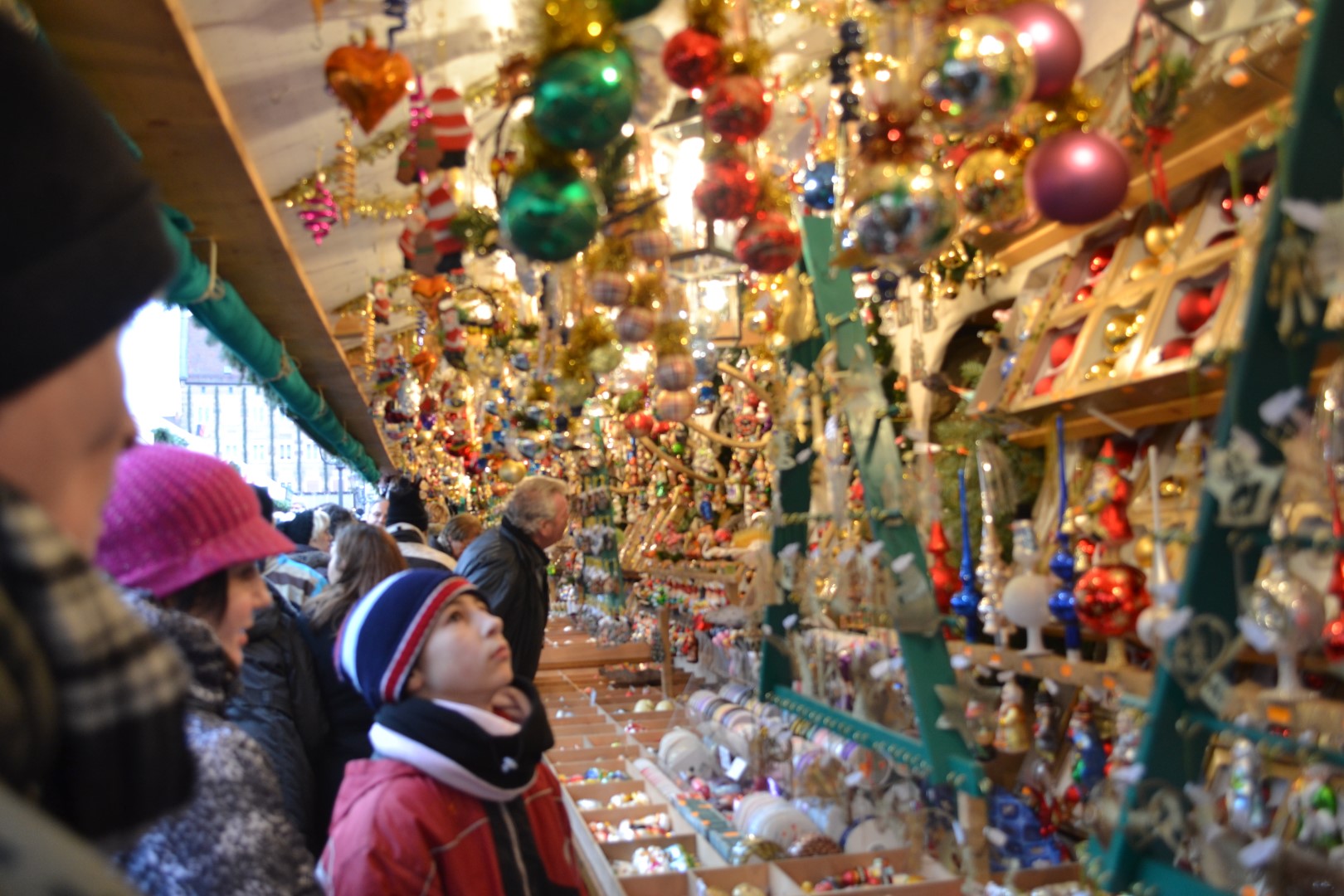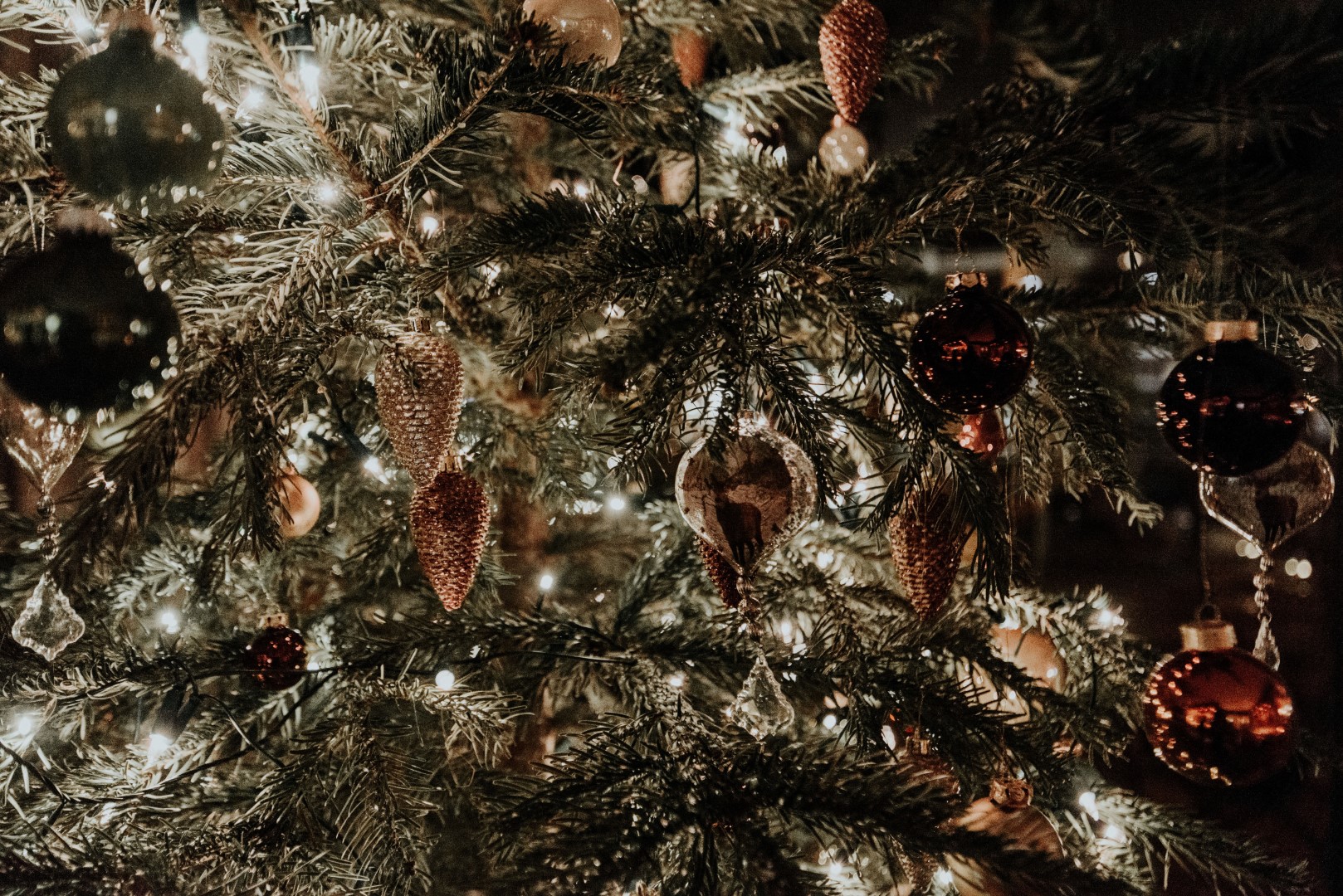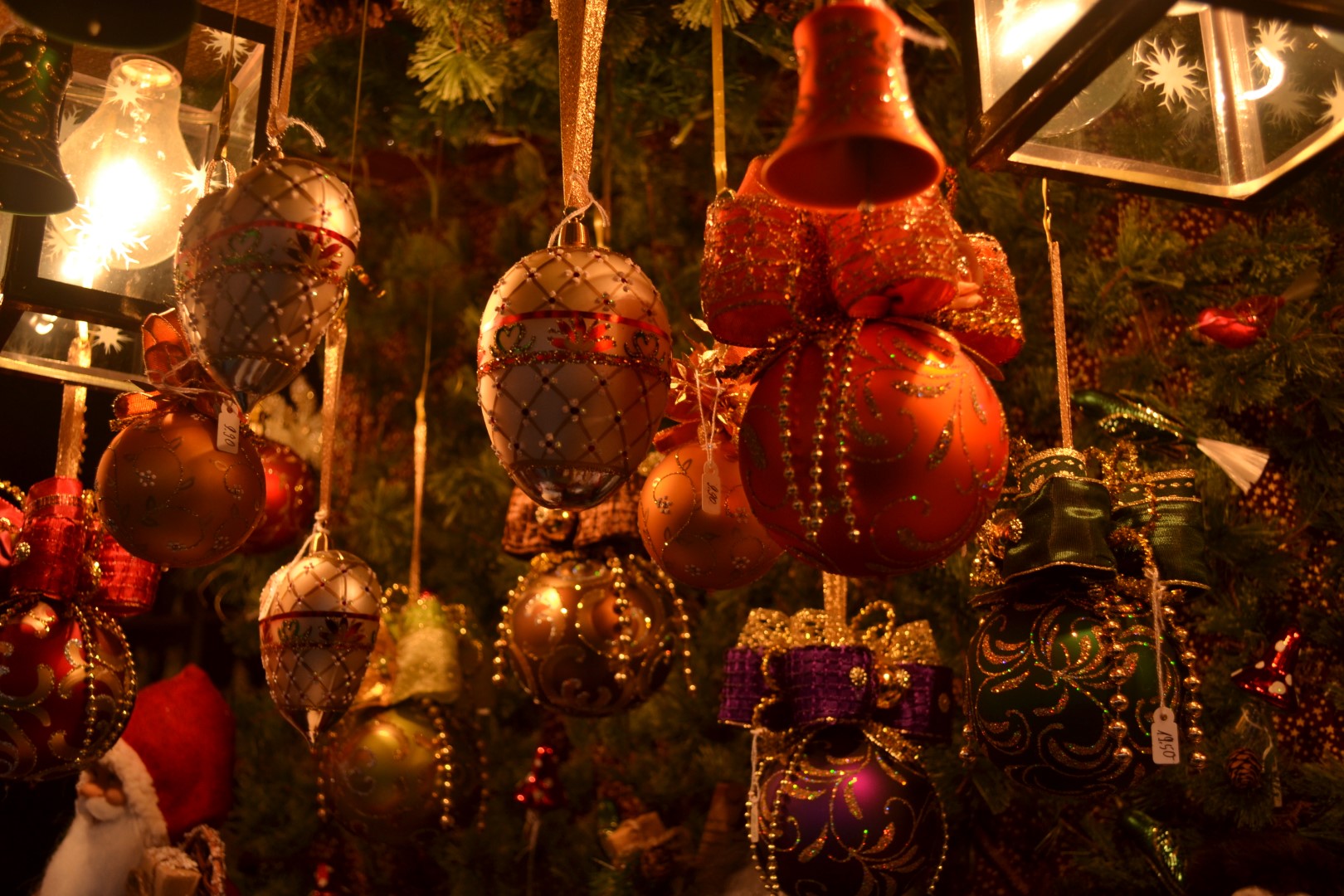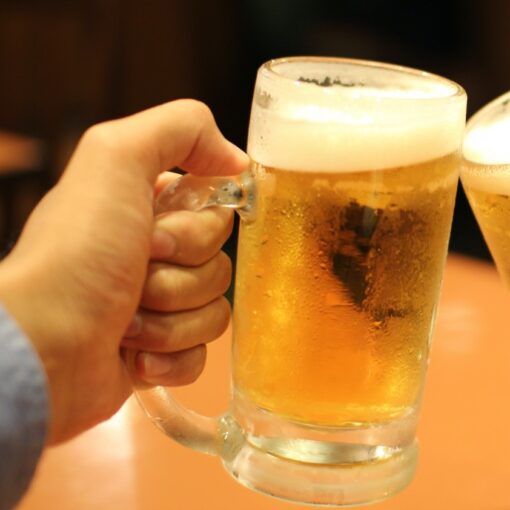[This post may contain affiliate links where we earn a small commission. Please see our disclosure for more information and thank you for supporting our site so we can continue to bring you awesome content for your travel inspiration!]
Growing up, every year, we would have a big feast and celebration to put up our Christmas tree. Lying on our plates, we would find a brand new Christmas Ornament that my mom had personally hand selected that represented that previous year in our lives. One year, I received a beautiful crystal dancer and another year a twirling ice skater (two hobbies that did NOT last very long!) and another year, I got a heartwarming porcelain rose (as that is my middle name).
Each year, I couldn’t wait to see what new ornament I could add to our eclectic looking Christmas tree!!!
Which is probably why I am so obsessed with German Christmas Ornaments now that I live here. I’m like a kid in a candy shop each year browsing the Christmas Market stalls for stunning handmade German Glass Christmas Ornaments to now gift to my own sons to add to our own tree.
Looking For Other Things To Buy at the German Christmas Markets? Here’s my list!

German Christmas Traditions
What would Christmas be today without the incredible influence of German Christmas Traditions? After all, we can thank them for things like the Christmas Tree (Tannenbaum), the advent calendar and songs like “Silent Night” (Stille Nacht). So, it should come as absolutely no surprise that those creative Germans also started the tradition of glass ornaments!
Want To Bring Germany Home To You This Year?
Make some Homemade Gluhwein or Kinderpunsch
Other Christmas Articles That Might Interest You:
- 20+ Must Try Foods at German Christmas Markets
- Best Christmas Markets in Germany (by those who have been there!)
- 10 Day Bavarian Christmas Market DIY Itinerary
- German Christmas Market Tips and FAQs
The History of the German Christmas Tree

Let’s first start with the Christmas Tree. The idea of using evergreen trees and plants during the winter months can’t be completely credited to the Germans actually. In fact, the ancient Egyptians, Celts, and many cultures all over the world used Evergreens to honor ongoing life (and to ward away evil spirits) and used them in many Winter Solstice (Dec 21st) practices.
In Germany, they integrated the pagan beliefs into modern day Christian practices and started associating Evergreens with Christmas. Many people would actually just build triangular shapes out of wood and then would cover them with evergreen debris.
Then, legend has it that one day Martin Luther was walking home one evening and saw stars radiating through some evergreen trees. In order to recreate the illusion, he added candles to a tree, and the tradition of lighting a Christmas tree took off.
Still today, Germans will put candles (often electric now) on their trees instead of standard “Christmas Lights.”
By the 1500s, people were decorating their Christmas trees with nuts and fruits to add to their decor.
But one year, a man from Lauscha, Germany decided to make a homemade glass blown ornament in the shape of nuts and fruits. Legend has it that maybe he was too poor to have fruits and nuts for his own tree, so he used his skill and trade from his hometown to recreate ones made of glass that he could then re-use year after year.
Glass Christmas Ornaments from Germany

In 1597, two glass blowers moved to Lauscha, Germany (located in the State of Thuringia near central Germany, about 2 hours North of Nuremberg)
Soon, everything in Lauscha centered around glassblowing. For 200 years, everything was made in their “hut” specifically for glass blowing, but as the industry boomed, the whole town took part in the production of glass, including many “at home” setups. Lauscha glass started as other things good before ornaments, like windows and even marbles.
In the 1800s, people in town started to take the glass marbles that they already produced and started reshaping them into german blown glass Christmas ornaments. They started with the basic shapes of Christmas tree decorations: nuts, fruits, and decorated pine cones. As the art continued to boom, entire families would become involved, even young children. Men would do the glassblowing and women would beautifully paint and carefully package the ornaments for shipping.
Over the years, as the popularity for the hand blown Christmas ornaments grew, they continued to change and perfect the different methods for glass blowing ornaments. They began adding intricate molds and beautiful shapes and over time, we are now graced with the gorgeous glass German ornaments we know today. You can find jolly snowmen, graceful birds, and even other “fun” molds like guitars, cars, and other fun trinkets.
Then, in the late 1800s, F.W. Woolwooth, being the savvy businessman that he was, started selling the Germany Christmas ornaments in his store in the US. In just a matter of years, the handmade ornaments had become a major export for Lauscha and the concept of Christmas tree ornaments was forever changed in the US
Today, in the town of Lauscha, you can still find men and women who do gorgeous blown glass Christmas ornaments! And the most beautiful part of that (besides the ornaments themselves) is that in many shops and businesses in town, they are still made traditionally. Men and women are still using their incredibly talented art by mouth blowing the glass and even hand painting the ornaments!
Authentic German Christmas Glass Ornaments
Today, you can find some really great German-inspired glass ornaments. However, a lot of them are not actually produced in Germany anymore. If you want to easily get some authentic glass Christmas ornaments from Germany then the Inge-Glass Manufaktur, which is actually still from the original line of Lauscha glass blowers, makes Bavarian Christmas ornaments that you can now easily find online. While many of their molds still date back to the 1800s, you can find a wide variety of new and fun options as well!
Lauscha Weihnachtsmarkt
Many people coming to Germany on the hunt for authentic german glass ornaments might be disappointed when showing up to markets like the huge Nuremberg Christkindle Markt or the Romantic Rothenburg ob der Tauber Christmas Market only to find out that so much of the rows of stalls all just have mass-produced works from places like China.
This is exactly why the draw to the Lauscha Christmas Market is so appealing. You can go to this charming market on the first two weekends of Advent and be assured that you are buying authentic, German, hand blown glass ornaments.
Lauscha would make for a great day trip from Nuremberg if you are here for the markets!
2021 Lauscha Christmas Market Dates
- Saturday, November 27th and Sunday, November 28th &
- Saturday, December 4th and Sunday, December 5th
Lauscha Ornament Museum (Lauscha Glasmuseum)
If you are in town for the Christmas Museum, you absolutely need to stop into the Glass Museum to check out the amazing vintage German Christmas ornaments.
Glass Museum Hours:
- Tuesday through Saturday: 12:00pm- 5pm
- Sundays and Holidays: 11am-5om
Cost:
- Adults: € 2,50
- Kids (6-14): € 1,50
- Families: € 7


















